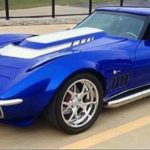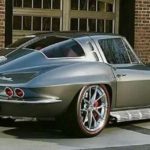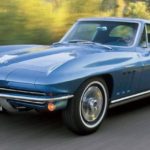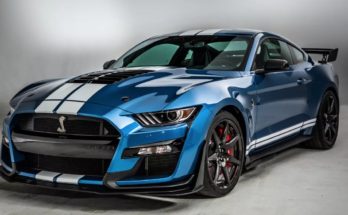What began as a privately-funded racing concept car designed by three enthusiasts (one of whom was GM’s youngest hire at the time) fortunately did not stay that way, becoming a nearly unanimously hailed vehicle for its power and handling when it arrived in the 1960’s. Decades later, the Sting Ray is still winning awards (in 2014 it won the Automobile of the Year award from Automobile Magazine, and placed as one of the top ten Car & Driver Magazine Ten Best List vehicles) and inspiring concept car designers close to home and abroad.
In 1960, the lightweight Sting Ray placed first in the SCCA National Championship. Along with its lightweight body, the Sting Ray became a sort of test for new technical developments such as the addition of aluminum materials and a four-speed manual transmission. The car managed to catch people’s eyes not only for its groundbreaking features but also because of the company it kept. It appeared in the film Clambake, which also starred Elvis Presley as its driver.
In 2009, the concept Sting Ray was revisited for the Centennial celebration of the Corvette, debuting at the Chicago Auto Show to honor Corvette’s 50 years in business. It also landed a starring role in Hollywood, appearing as the character “Sideswipe” in Michael Bay’s Transformers film franchise, specifically Transformers: Revenge of the Fallen.
The Sting Ray concept cars aside, there have been four generations of the Sting Ray made as leisure vehicles (Though there are six generations, only four of them also wore the label Sting Ray). Available as a 2-door coupe or convertible, this sports car has a V8 engine and plenty of options for transmission, all the way from 3-speed manual to 8-speed automatic. It ranges between 3,000-4,000 lbs at curb weight, and between 174-179 inches long. Its wheelbase measures between 96 to 107 inches.
Apart from turning heads as a hollywood star and a daring sports vehicle, the Sting Ray has also garnered attention for its futuristic inclusions, such as the C7’s use of Aerogel, which prevents heat from the transmission tunnel from entering the cabin. Aerogel, of course, being a project that was developed by NASA. The new generation Sting Ray also incorporates LED technology, carbon fiber, and hydro-formed aluminum.
The 2015 Sting Ray took the upgrades even further, including a Performance Data Recorder, which is comprised of a camera (high-def), a telemetry recorder and an SD card. There are four modes to choose from when recording: Track, Sport, Touring, and Performance. This information can be viewed either on the car’s touchscreen or at a computer for further analysis of speed, g-force, and other performance metrics.
The Sting Ray has also developed in several different directions to include various models and special editions, including the convertible, Atlantic Design (inspired by private jets), Pacific Design (inspired by weekend track event enthusiasts), the Twilight Blue Design, the Spice Red Design, Jet Black Suede Design (all with specific color design elements), and the Grand Sport Z15 and Grand Sport (Z25) Collector Edition.
The newest editions for the Sting Ray, arriving next year, are the Carbon 65 Edition (Z30), celebrating Corvette’s 65th anniversary, and the ZR1, although it has yet to be announced. It is, however, expected to show up sometime in 2018. Keep an eye out for this sure to be stunner.
 " >
" >











